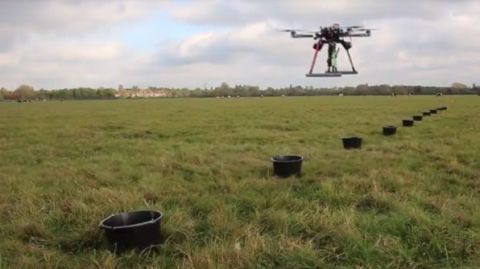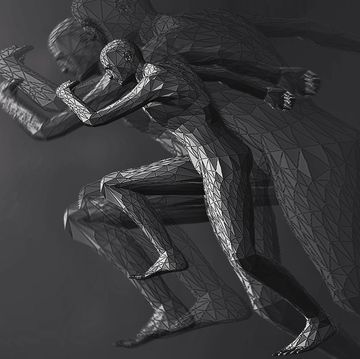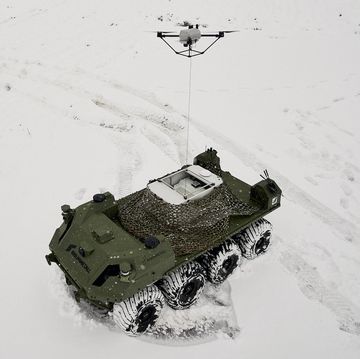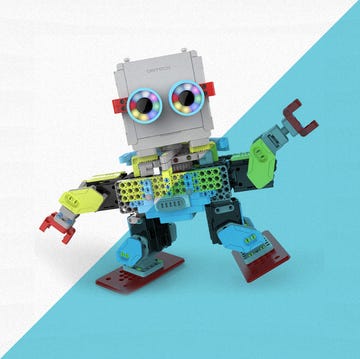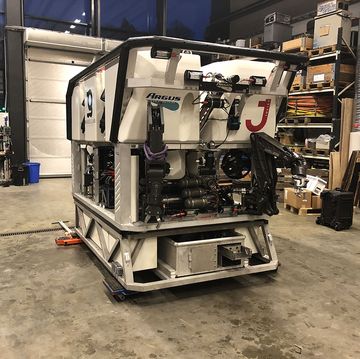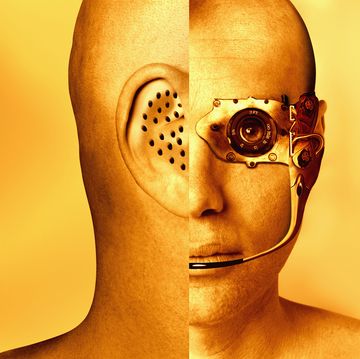It takes years for a tree to grow, only moments to chop it down. It's one of the basic facts of nature that can make environmental restoration projects so painstakingly slow. BioCarbon Engineering, a company out of Oxford, England, wants to speed up the process by getting drones to plant trees faster than any human could. A billion of them.
The company is going to start testing its plan in September, when its partnership with the Worldview International Foundation (WIF) will begin in Myanmar, also known as Burma. A development group focused on local forestation efforts around the globe, BioCarbon's drones have the potential to radically change WIF's mission. WIF has spent years working with locals to plant over 2.7 million mangrove trees in the delta of Irrawday River, a central river in the country and crucial to many industries and communities.
Planting 2.7 million trees in 5 years, as WIF and its local partners have done, is impressive. BioCarbon says its drones can plant 100,000 trees in a single day. WIF and its local partners have planted trees in around 750 hectares in the delta, which works out to a little more than 1,850 acres. BioCarbon is going to take 250 additional hectares and plant a million trees there.
BioCarbon was founded in 2015 and while it doesn't get into much detail about the evolution of its drones, it does say that it's had successful tests in England and Australia, where it has planted trees in abandoned mines.
The Johnny Appledrones (sadly not an official name) work in three stages. There's mapping, which is a familiar use of drones for anyone involved in farming. With investments from dronemaker Parrot, the company's drones will map an area and analyze surface topology and composition, soil type and moisture, any possible physical obstructions.
These analyses will, according to the company, "help decide which seeds should be planted. Since it is generally advantageous to have a heterogeneous mix of tree species planted in the same area, the planting UAV is capable of carrying a mix of seeds and control their planting pattern."
Once the data is in, the drones fly low, around 3-6 feet above the ground, planting new seeds every six seconds. The one advantage of planting by hand, of course, is that you can guarantee that each seed is buried in the ground. The company refers to this as a survival rate. "We can modify what to plant, and where, so you have the highest chance of survival," Irina Fedorenko, cofounder of BioCarbon Engineering, tells Fast Company. "If you do aerial spreading–you just spread seeds wherever–maybe they hit a rock, maybe they hit a swamp, and they're not going to survive. But we can basically control for that."
The drones aren't just letting the seeds drift in the breeze. Each drone uses a pressurized can to shoot a biodegradable seed pod into the ground. The company says each seed pod is "designed to ensure high germination rates and customized to application."
After the mapping and planting, the drones monitor the area regularly. That data gets fed into the company's machine learning algorithms, presumably strengthening the mapping part of the plan. And then it begins all over again.
Cofounder Lauren Fletcher used to work at NASA and finds direct comparisons between his two jobs. "I worked specifically on the intersection between biology and engineering on the life-sciences programs on the Space Station," he told ABC News Australia, "so this has given me a lot of knowledge of how you take smart, cutting-edge engineering systems and apply it to a biological system."
While we're a long way from terraforming any planets, being able to change the Earth's ecosystem in a positive way would be a good step towards proving that we could have the will to do so on other worlds.
Source: Fast Company
David Grossman is a staff writer for PopularMechanics.com. He's previously written for The Verge, Rolling Stone, The New Republic and several other publications. He's based out of Brooklyn.
